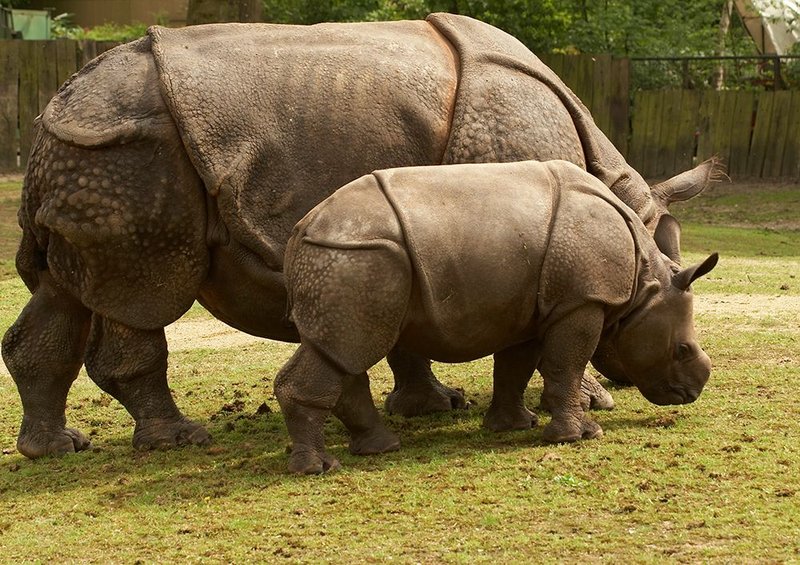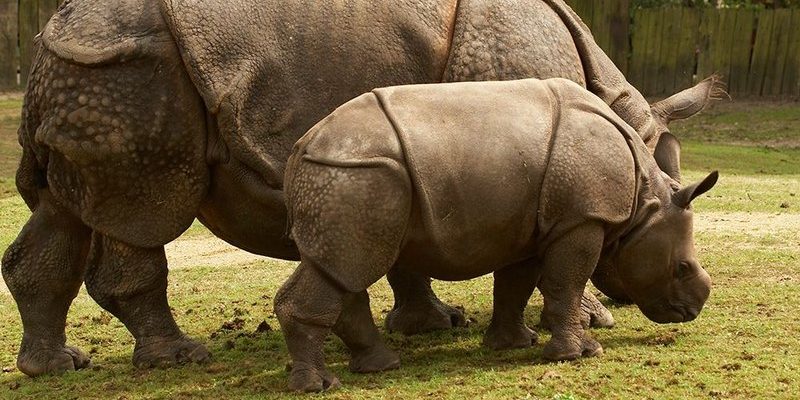
Javan rhinoceroses are some of the rarest large mammals on Earth, with only about 80 individuals left. Their secretive nature and preference for thick forests make them one of the hardest species to study. So, what do we really know about how they raise their calves? Grab a cup of coffee, and let’s explore the parenting habits of these remarkable rhinos.
The Life Cycle of a Javan Rhinoceros
To truly understand how Javan rhinoceroses raise their young, we need to start with their life cycle. Javan rhinos typically reach sexual maturity between ages 3 to 5, which is quite early for such large animals. Here’s the thing: once they’re mature, females have a very specific reproductive pattern. They usually give birth to a single calf every three to four years after a lengthy gestation period of about 15 to 16 months.
This long gestation is essential. The developing calf needs that time to grow enough before facing the challenges of the wild. When the calf is finally born, it’s typically around 50 to 70 pounds—impressive for such a tiny creature! The mother provides vital nutrients through her milk, which is rich in fats and proteins, allowing the young rhino to flourish in its early months.
Mother-Child Bonding
Right after birth, the bond between the mother and the calf is incredibly strong. Javan rhinoceros mothers are known for being attentive and protective. The calf will stay close to its mother, following her as she grazes on grasses, shrubs, and leaves. Honestly, this vigilant behavior is key. In such a densely forested environment, threats from predators like tigers and even other male rhinos loom large.
For the first few months, the mother will constantly keep an eye on her little one. You might be wondering how she does this while also feeding herself. Well, that’s where the beauty of rhino parenting comes in. The mother will often graze in an area that allows her to keep her calf within sight, ensuring that she can respond quickly if danger approaches.
Teaching Life Skills
As the calf grows, the mother starts teaching it essential survival skills. This phase usually begins when the calf is about six months old. The mother introduces her young one to different types of food, showing it how to forage for plants and other foliage. This is crucial because, in the wild, knowing what to eat can mean the difference between life and death.
The mother also encourages her calf to play—a significant part of learning for many young animals. Through playful interactions, the calf develops its physical abilities and social skills. This playful energy isn’t just fun; it’s vital for building strength and coordination, which will be necessary as they explore their environment more independently.
Reinforcements: Family Groups
It’s interesting to note that Javan rhinoceroses are primarily solitary animals, but they do have a loose social structure. When a mother raises her calf, she might occasionally interact with other mothers and their young. These interactions can help provide additional safety to the calves, as there’s strength in numbers.
In places where the habitat allows it, these informal family groups can help teach the young ones about social hierarchy and behavior. It’s akin to how human kids might learn from each other while playing in a neighborhood park. The more experiences they have with peers, the better prepared they’ll be for the challenges of adulthood.
Challenges of Raising Young in the Wild
Raising a calf in the wild isn’t without its hurdles. The Javan rhinoceros faces numerous challenges, such as habitat loss and poaching. These threats make it even more challenging for a mother to ensure her offspring’s survival. For example, if a mother rhino has to travel further to find food due to habitat loss, she risks exposing her calf to predators.
Additionally, because of their low population numbers, each birth is crucial for the species’ survival. Losing a single calf can be a significant setback for the overall population. It makes the careful nurturing approach of the mother all that more vital. Every day brings a new set of challenges for them, and each mother must navigate these while keeping her baby safe.
The Future of Javan Rhinoceroses
Looking ahead, conservation efforts are essential for improving the survival rates of Javan rhinoceroses and their calves. Several organizations are working diligently to protect their habitat and reduce poaching. It’s all about ensuring that these incredible creatures have a safe space to thrive, raise their young, and continue their legacy.
You might be wondering how you can help. Educating others about the Javan rhinoceros and supporting conservation efforts can make a real difference. The more awareness we create, the more pressure there is to protect these beautiful animals and their environments.
In summary, the journey of a Javan rhinoceros and its calf is a delicate dance of growth, learning, and survival. From the attentive care of the mother to the unique challenges of the wild, these animals show us the beauty and fragility of nature. As we learn more about how Javan rhinoceroses raise their young, we gain a deeper appreciation for their role in the ecosystem and the importance of protecting these remarkable creatures for future generations.
So the next time you come across a story of the Javan rhinoceros, think about that mother out there—braving the wild and nurturing her calf with fierce love and dedication. It’s a reminder of the bond between parents and their young, a bond that transcends species and speaks to the heart of what it means to nurture life.

